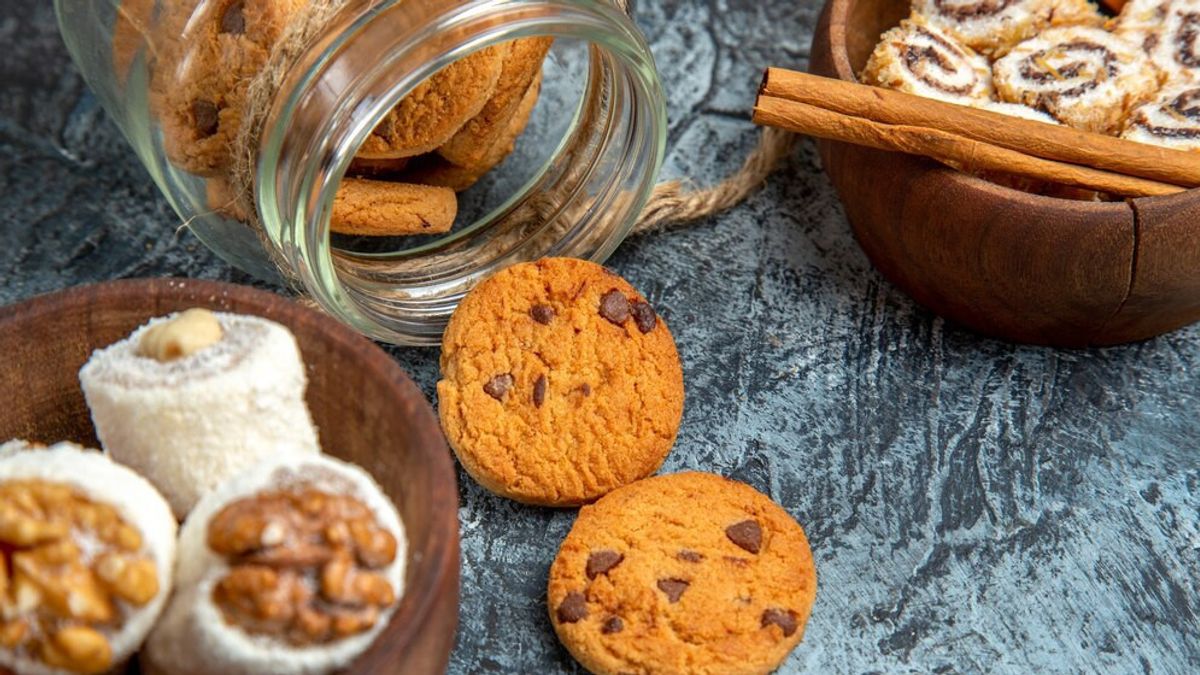YOGYAKARTA Kukis, or in English it is called cookies and in Dutch it calls koekjes. According to an etimologist, koekje which means small cones were converted into cookies in the early 1700s and introduced to America in the 1600s. Launching the FoodTimeline Library, Tuesday, August 13, processed foods from flour, eggs, butter, and sugar grew widely in the late Middle Ages. This is supported by the massive manufacturer of the ingredients.
Kukis with biscuits is the difference apart from mention which refers to certain areas. It also relates to ingredients and processing methods so that it produces a different texture of sweet snacks that we know with cookies and biscuits. Cookies usually havender textures while the cookies are softer. However, there is also a variety of kukis whose outside is crunchy but still maintains the softness of the inside. Well, to get to know the type of kukis, here's the list and explanation.
Kukis is classified as grilled cakes. For what is known as the drop of the kukis, not made in a full large loyang. But made in a row for the sake of a corner above the umbrella so that each piece can be enjoyed. When roasted, the kukis will expand and can maintain its soft texture on the inside, depending on the ingredients used in the dough.
Bar cookies or kukis bars, usually chosen tubers for the easiest and fastest way to make cookies. Made by tung all the ingredients and dough coated into the umbrella. Then roast and cut it into the form of a bar.
Not only in the form of a circle for drop cookies or bars for bar cookies. There is also a kukis maker who chooses to be rolled-up type, or known as rolled cookies. Dry cookies that are rolled up make require more time and preparation. Usually made into a bar first, then rolled up and then cut it into pieces to the size of a bite size or one bribe.
SEE ALSO:
Kukis with certain shapes, called milled cookies. Usually formed funny or clashed with anime and other forms. There is also an added jam that combines two pieces of kukis into one or one particular form.
Kukis, which is not roasted, is generally made from candy or butter that is formed and then dried. There are also those that combine the dried pastries and then add cream, pasta, or jam. After that, it is left to harden in the refrigerator, then cut into pieces according to the desired size.
Dry brushes that are pressed, rarely made at home because they require special tools to make them. Launching Untammed Curiosity, this dry kukis needs to be compressed made from a soft dough that is extracted. Tools, especially in the form of cookies or cookies to get a decorative form.
That's an explanation of the type of kukis and its difference to biscuits. Are you interested in making one of the types of kukis above at home?
The English, Chinese, Japanese, Arabic, and French versions are automatically generated by the AI. So there may still be inaccuracies in translating, please always see Indonesian as our main language. (system supported by DigitalSiber.id)
















